
























Psychosomatic Medicine:
|
|
Un Leçon Clinique à la Salpêtrière, 1887. André Brouillet Jean-Martin Charcot demonstrating in a clinical lecture to his colleagues at the Salpêtrière, a large hospital in Paris, that the symptoms of hysteria were as real as those of any organic disease. |
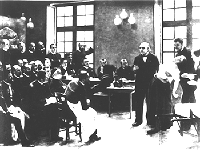
|
|
In spite of this widespread attitude, by the 1840s and 1850s hysteria was a serious subject in medical textbooks and in separate, often massively detailed studies. One of the most remarkable of these was the 800-page Traité Clinique et Therapeutique de L'Hysterie published in 1859 by Pierre Briquet, which presented data derived from 430 hysterical patients observed at a Paris hospital over a ten-year period. 17 Jean-Martin Charcot, the famous French clinician celebrated for his elucidation of organic neurological syndromes, also turned his attention to hysteria. In the 1870s, Charcot followed Briquet's lead in studying hundreds of hospital patients in an attempt to specify its precise symptomatology and clinical course. 18 |
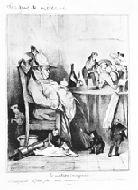
|
Honoré Daumier
(1808-1879)
Even as some doctors defended the idea of "neuroses" --nervous diseases without apparent organic cause --others remained suspicious. Weren't neurotic disorders better thought of as the imaginary diseases of tiresome patients looking for attention? |
|
|
The next major stage in the unfolding of the relationship between emotions and disease began with the deeper exploration of one of the neuroses: hysteria. This complex disorder was long known in medicine but not until the seventeenth and eighteenth centuries was it seriously associated with the nervous system or emotional causation. Until that time it was regarded as of uterine origin, as its name implies (from the Greek "hystera" = uterus). 16 In the seventeenth century, Thomas Willis thought that hysterical disorders were primarily convulsive consequences of "the brain and nervous stock being affected." Famous clinician Thomas Sydenham said that they were caused by "irregular motions of the animal spirits," which were frequently precipitated by "some great commotion of mind, occasioned by some sudden fit, either of anger, grief, terror or like passions." In the eighteenth century, Robert Whytt acknowledged that these disorders may mimic almost any common somatic condition in a "chameleon"-like or "protean" fashion, and may be triggered by intense "imagination," as when a patient falls into convulsive fits upon seeing someone in an epileptic seizure. Because of the extraordinarily varied nature of their symptoms and the suspected role of the emotions, patients suffering from hysteria and related "functional neuroses" were often thought by both physicians and lay people to be experiencing merely "imaginary diseases," as clearly depicted by the artist Honoré Daumier. |
|
Camera, ca. 1900.
|
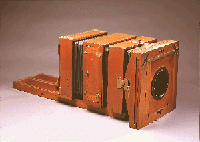
|
|
|
Charcot's goal was to discover regularity and pattern amidst the confusing welter of hysterical symptoms. He wanted to show that despite its often dramatic appearances, hysteria was not merely "protean" but a solid clinical entity with recurrent and universal features, just like the anatomically-based neuropathological conditions he had previously studied. With the help of meticulous, long-term observation and the innovative use of the photographic camera, Charcot determined and extensively depicted several characteristic and general phases of the hysterical disorder. He insisted that "nothing occurs at random but, on the contrary, all follows certain well-determined rules which are common to cases seen in both hospital and private practice." 19 Later Charcot introduced hypnotism as both an experimental and therapeutic technique to explore other strange phenomena manifested by hysterical patients and also as a potential key to unlocking the underlying neurophysiological and possibly psychogenic, trauma-related mechanisms of the hysterical neurosis. 20 |
|
Désiré-Magloire Bourneville and Paul Regnard 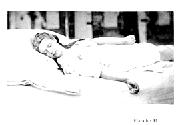
|
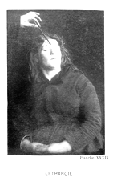
|
Iconographie Photographique de la Salpêtrière, At the Salpêtrière, doctors photographed and catalogued the supposed organic markers of hysteria. Charcot claimed that the resulting record of symptoms was "valid for all countries, all times, all races, " and "consequently universal." |
|
Sigmund Freud

|
Joseph Breuer
and Sigmund Freud, 
Studies on Hysteria included the famous case study of "Anna O." |
|
But obsessional neurosis, in which the puzzling leap from the mental to the physical plays no part, has actually, through the efforts of psycho-analysis, become more perspicuous and familiar to us than hysteriam and we have learnt that it displays certain extreme characteristics of the nature of neurosis far more glaringly.
Sigmund Freud
|
|
Young Sigmund Freud studied with Charcot in Paris during the winter of 1885-1886 and was deeply impressed by his ideas. Freud had already been alerted to the bizarre phenomena of hysteria and to the linkages with hypnosis by the Viennese physician Josef Breuer. Breuer had told Freud about a patient ("Anna O.") whose strange hysterical symptoms he treated in 1880-1882 by inducing hypnotic states and systematically leading her back to the onset of each symptom. Once the patient re-experienced the original circumstances with a display of emotion, the corresponding hysterical symptom disappeared. Freud's study with Charcot gave him a theoretical framework to understand what Breuer had told him. When he returned to Vienna, he and Breuer began a close collaboration publishing their joint Studies on Hysteria in 1895. They hypothesized that hysterical symptoms derive from undischarged "memories" connected to "psychical traumas." These memories originated when the nervous system was in a special physiological condition or "hypnoid state"; they then remained cut off from consciousness. Hysterical symptoms resulted from the "intrusion of this second state into the somatic innervation," a mind-to-body process Freud and Breuer called "conversion." Tensions and differences steadily separated Freud from Breuer. Breuer pursued physiological hypotheses and the continued use of hypnotic techniques. Freud moved in the direction of psychological mechanisms and the abandonment of hypnosis. As Freud's ideas further matured, he developed a novel set of theories and techniques that he called "psychoanalysis." He introduced revolutionary theoretical concepts such as "unconscious" mental states and their energetic "repression," the widespread occurrence of infantile sexuality, and the symbolic encoding of psychological meaning in dreams and hysterical symptoms. Freud also stressed the investigative techniques of "free association" and dream interpretation, two methods for overcoming "resistance" and uncovering hidden unconscious wishes without using hypnosis. He thus shifted away from Charcot's observational approach to an even more revolutionary one: he substituted listening to patients for looking at them. |

|
Thomas W. Salmon
|
|
|
The strong psychogenetic explanation of hysterical symptoms remained a key feature of Freud's mature work and of later psychoanalysis. In his Introductory Lectures of 1916-1917, he promoted the notion of conversion as a "puzzling leap from the mental to the physical" and continued to describe hysterical symptoms as symbolic representations of unconscious emotional conflicts. During World War I, Freud's ideas about the emotional origins of hysterical symptoms were often applied to shell-shock and other "war neuroses." Soldiers displaying such somatic symptoms as paralysis, muscular contracture, and loss of sight, speech, and hearing for which no organic bases could be found came to be regarded, as in Thomas Salmon's book, as suffering from conversion hysteria. 21 In these cases, psychogenic explanation focused on unconscious conflicts between "fear" and "duty" with a resulting "flight into illness." |
|
Georg Groddeck (1866-1934), Groddeck's Book of the It--that helped inspire Freud's own concept of the "id"--claimed that all physical illnesses are produced by the unconscious mind. |
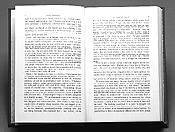
|
|
|
In the 1920s and 1930s conversion hysteria gained popularity as a general medical notion, as psychoanalysts joined internists and other physicians in exploring the meaning of hysterical symptoms. Particularly influential were the Austrian Felix Deutsch, the American Smith Ely Jelliffe, and, most provocatively, the German Georg Groddeck, all physicians and pioneer psychoanalysts. 22 Groddeck was a forceful proponent of the view that the psychological mechanism for hysterical conversion could be generalized to the entire range of somatic disease. 23 He argued in The Book of the It that symptoms in any organic disorder could be interpreted like hysterical symptoms, as symbolic expressions of unconscious wishes manifested in the patient's body. |
|
Psychosomatic Medicine,

|

| |
|
Helen Flanders Dunbar (1902-1959). A Dante scholar, theologian and medical doctor, Dunbar hoped psychosomatic medicine would integrate the treatment of spirtual, emotional and physical suffering into a single framework. |
Helen Flanders Dunbar, Emotions and Bodily Changes: A Survey of Literature on Psychosomatic Interrelationships, 1910-1933, New York, 1935 |
|
The émigré psychoanalyst Franz Alexander tried to work out a compromise between physiology and Freudian theory. 24 Soon after his arrival in the United States from Europe in the early 1930s, he repudiated the approach taken by Groddeck and like-minded analysts. He carefully distinguished between classic conversion hysteria and what he called "organ neuroses," those disturbances of organic function controlled physiologically by the autonomic nervous system (where unconscious symbolic processes are not present). According to Alexander, Groddeck and others had erased a boundary that needed to be carefully redrawn. They had interpreted everything too psychologically and had ignored the automatic physiological mechanisms that substantially controlled the expression of emotion as the body responded to stressful stimuli. But still faithful to the psychoanalytic tradition, Alexander also identified specific unconscious wishes and infantile desires (for example, the unconscious wish to be fed) in the "psychic stimuli" that he said precipitated specific chains of physiological response and, ultimately, specific somatic diseases. Alexander's theoretical formulations helped stimulate serious psychosomatic research in the United States. He organized a group of investigators from various clinical and laboratory disciplines at the Chicago Institute of Psychoanalysis, and additional research groups soon developed elsewhere. Prominent among these groups was one led by Stanley Cobb at the Massachusetts General Hospital. 25 In addition, Helen Flanders Dunbar at the Columbia Presbyterian Medical Center in New York City produced a pioneering monograph, Emotions and Bodily Changes: A Survey of Literature on Psychosomatic Interrelationships, which synthesized recent research findings and in its subtitle gave the growing American movement a name. In 1939, Psychosomatic Medicine was founded as the first medical journal devoted specifically to publishing research in this expanding area of investigation. |
Roy Grinker
and John P. Spiegel,
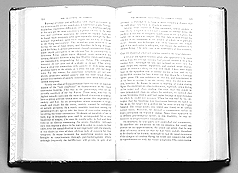
|
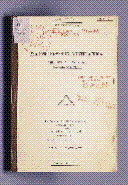
|
|
Men under Stress,
|
Roy Grinker and John P. Spiegel, |
|
World War II accelerated the growth of psychosomatic medicine even further. As in World War I, many soldiers displayed the symptoms of shell-shock and its debilitating variants, but during this war the American Armed Forces mobilized psychiatrists and others trained in psychosomatic medicine to help with the problem. 26 Roy R. Grinker's and John P. Spiegel's War Neuroses in North Africa: The Tunisian Campaign is an indication of wartime concerns; their expanded edition, Men Under Stress, contributed to the heightened postwar enthusiasm for psychosomatic medicine, as did the famous director John Huston's film for the Armed Forces about combat veterans recovering from psychosomatic disorders, Let There Be Light. |

|
Franz Alexander
, |
|
Interest in psychosomatic medicine in the late 1940s and in the 1950s became so intense, in fact, that the scientific literature multiplied rapidly, medical schools created new instructional programs, and textbooks such as Edward Weiss's and Spurgeon English's Psychosomatic Medicine found an eager audience among a whole generation of medical students. In addition, Franz Alexander supplemented his numerous professional writings with a popular general text that was as widely read in non-medical as in medical circles and as influential through its diagrams as through its accessible prose. Psychosomatic medicine was so much the "rage" at mid-century that popular magazines ran articles by the score and psychosomatic theories even found their way into the lyrics of a popular Broadway show. |

|